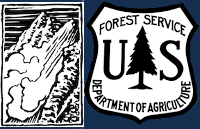Snowpack and Avalanche Discussion
<p>Strong east winds in the Bridger Range are transporting this weekend’s snow into unstable slabs where human-triggered avalanches are likely. Wind-loaded slopes will be atypical due to the easterly wind direction. Yesterday, Alex and Ian saw many loose snow avalanches that picked up enough volume to be dangerous in technical terrain (<a href="https://www.mtavalanche.com/images/22/natural-loose-snow-avalanches-n-b…;) warning that locations with drifted snow would become more unstable (<a href="https://www.youtube.com/watch?v=gV89cwNXEnw"><strong>video</strong></a&…;). On slopes unaffected by the wind and lacking recent drifts, human-triggered avalanches are possible. Avoid wind-loaded slopes and dig to test the stability of the new snow and buried weak layers before getting into avalanche terrain. The danger is CONSIDERABLE on wind-loaded slopes and MODERATE on all others.</p>
<p>Frigid temperatures narrow your margin for error by exacerbating minor incidents and adding risk for rescue teams. Make conservative travel plans for the day.</p>
<p>In the last week in Cooke City, 18” of new snow loaded weak layers buried 18-30” deep and resulted in dangerous avalanche conditions. Sadly, a fatal avalanche occurred in the Sheep Creek drainage Saturday (<a href="https://www.youtube.com/watch?v=qC7geA4kgyg"><strong>video</strong></a>…; <a href="https://www.mtavalanche.com/node/25906"><strong>photos and preliminary</strong></a><a href="https://www.mtavalanche.com/node/25906"><strong> details</strong></a>). Yesterday, a rider triggered an avalanche that broke 200’ wide, ran the entire 50’ vertical available and piled snow deeply at the base of the small hill (<a href="https://www.mtavalanche.com/node/25937"><strong>photo and details</strong></a>) and a group of riders saw a 700’ wide avalanche on the south face of Mount Abundance (<a href="https://www.mtavalanche.com/node/25941"><strong>photos and details</strong></a>). Avoidance is the management strategy with slides of this size. The likelihood of triggering an avalanche is decreasing, but the potential size and destructive force are not. Carefully evaluate your route choices and the snowpack for signs of instability. The danger is MODERATE.</p>
<p>In the Northern Gallatin and Northern Madison Ranges and the mountains around West Yellowstone human-triggered avalanches are possible ranging from loose snow sluffs that could tumble a skier or rider through steep terrain to slab avalanches breaking 1-2’ deep on buried weak layers. Saturday’s rider-triggered avalanche near Two Top outside of West Yellowstone would have been dangerous on a larger slope (<a href="https://www.mtavalanche.com/node/25924"><strong>photos and details</strong></a>). Avalanches breaking deep in the snowpack are unlikely. Assess the snowpack for instability and mitigate the consequences of a mistake by carrying rescue gear, exposing only one person at a time to steep slopes and watching your partners. The danger is MODERATE.</p>
<p>Human-triggered avalanches are possible in the Southern Madison and Southern Gallatin Ranges on slopes where drifts from the last week sit on weak layers in the snowpack buried 6-18” deep. Areas below cornices and slopes where the recent snow seems deeper than other areas are suspect. Digging down to test the upper two feet of the snowpack will tell you a lot about overall stability. On slopes without recent wind-loading, large avalanches are unlikely. Assess the snowpack for isolated instabilities and follow safe travel protocols. The avalanche danger is MODERATE on wind-loaded slopes and LOW on all others.</p>
<p>If you get out, please send us your observations no matter how brief. You can submit them via our <a href="https://www.mtavalanche.com/node/add/snow_observation"><strong>website<…;, email (<a href="mailto:mtavalanche@gmail.com"><strong>mtavalanche@gmail.com</strong></a…;), phone (406-587-6984), or Instagram (#gnfacobs).</p>
